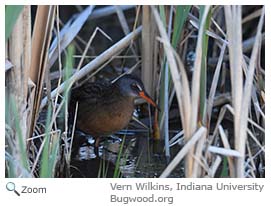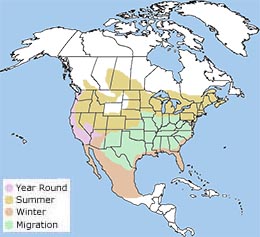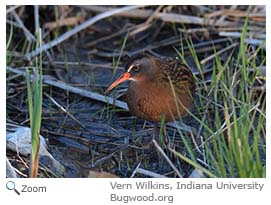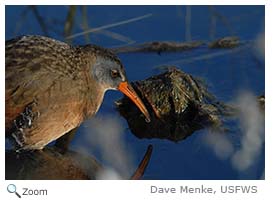Virginia Rail - Rallus limicola |
|||||||||||
Description
Range |
Habitat Diet Life CycleNests are built in May. Male and females build their nest together in a marsh with abundant plant cover. Above their nest, they build a canopy by weaving surrounding tall plants for added protection. The Virginia rail often builds several dummy nests in its territory. BehaviorThe Virginia rail has very strong legs and weak wings. With its strong legs, it can walk and run on floating marsh plants. It only flies during migration. |
||||||||||
Audio Credit: xeno-canto.orgDaniel Lane
|
|||||||||||


 The Virginia rail has a very large range. It lives throughout the northern and western United States and throughout southern Canada. In the winter, the Virginia rail occupies Mexico, all of Florida and the gulf coast of the United States.
The Virginia rail has a very large range. It lives throughout the northern and western United States and throughout southern Canada. In the winter, the Virginia rail occupies Mexico, all of Florida and the gulf coast of the United States.

